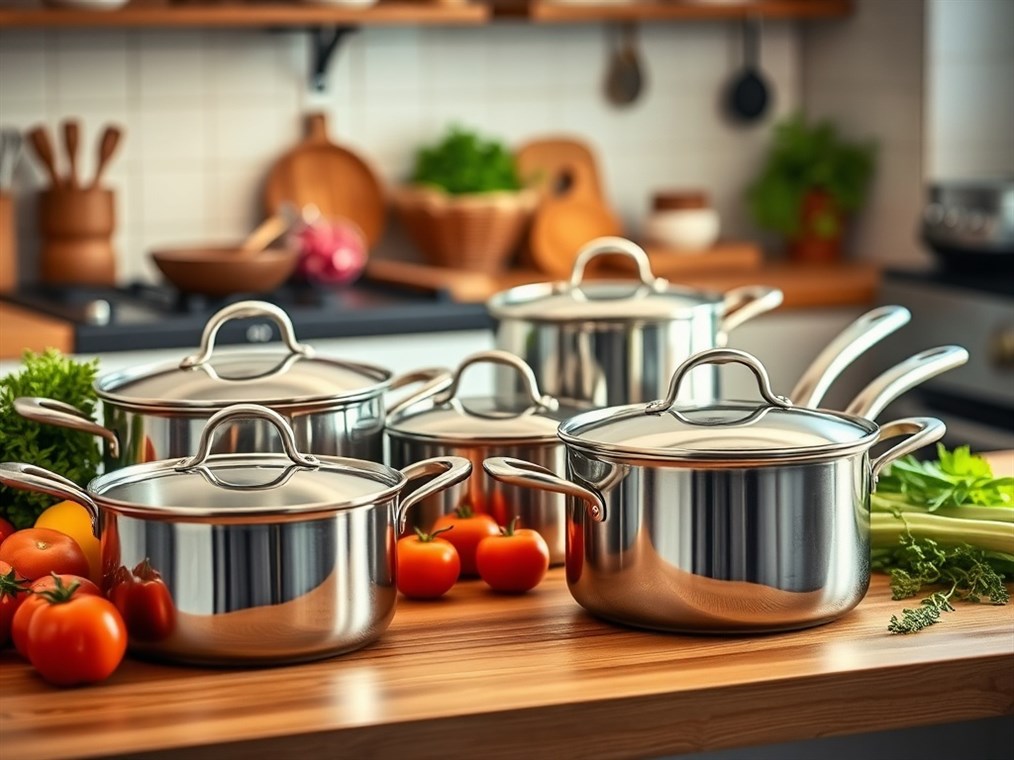Is Made In Cookware Safe? Let’s Dish About Pots and Pans
Okay, let’s talk cookware – specifically, Made In. We’re all trying to be a little healthier these days, and that means thinking about what our food touches before it hits our plates. Are those fancy pots and pans leaching something nasty into our dinner? That’s the million-dollar question, isn’t it? So, let’s dive into Made In, a brand that’s been making waves with its promise of restaurant-quality gear for the home cook.
Made In aims to bring that professional chef experience right to your kitchen. They team up with manufacturers in the US and Europe who’ve been doing this for generations, focusing on quality materials and old-school craftsmanship. From gleaming stainless steel to those tempting non-stick surfaces, they’ve got a whole lineup to choose from. But are they safe? Let’s break it down.
Stainless Steel: The Reliable Workhorse
When it comes to safety, stainless steel is usually the first thing that comes to mind, and for good reason. Think of it as the reliable workhorse of the kitchen. It’s non-reactive, which basically means it doesn’t play chemist with your food, even when things get hot or you’re cooking up something acidic like tomato sauce. Made In uses high-quality stuff, so you’re less likely to have any unwanted surprises ending up in your meal.
Now, stainless steel is a mix of iron, chromium, and nickel. That chromium is the key – it creates a shield that keeps things safe. You’ll often see grades like 18/10, which is a good sign. But, fair warning, some folks with nickel sensitivities might want to be a little cautious. And maybe don’t simmer that marinara sauce for hours in it, just to be extra safe.
Non-Stick (PTFE): The Teflon Tango
Ah, non-stick. So convenient, right? Made In uses PTFE, or Teflon as it’s commonly known. The good news is that modern non-stick is PFOA-free, and that’s a big deal. PFOA was the bad guy they used to use, but it’s been out of the picture since 2013.
But here’s the thing: PTFE can still be a bit temperamental. Crank the heat up too high – above 500°F (260°C) – and it can release fumes. We’re talking potential polymer fume fever, which sounds like a bad case of the flu. So, keep the heat in check, and make sure your kitchen has good airflow.
Now, there’s been some chatter about Made In’s non-stick. There was a class-action lawsuit in 2023 alleging false advertising, claiming the pans weren’t as “PFOA free” or “100% non-toxic” as advertised. Consumer Reports even found traces of PFOA in some pans. It’s a reminder to stay informed.
My advice? Treat your non-stick with love. Use silicone or wooden utensils to avoid scratches, and if that coating starts to look worse for wear, it’s time for a replacement.
Non-Stick (Ceramic): The New Kid on the Block
Looking for a PTFE-free option? Made In has a CeramiClad™ line. This ceramic coating is free of PFAS, PFOA, PTFE, lead, and cadmium. It’s applied to Made In’s 5-Ply Stainless Clad cookware.
Ceramic coatings are generally considered more resistant to wear than PTFE coatings. However, some sources indicate a lack of third-party testing results for the pan and coating.
Carbon Steel: The Seasoned Pro
Think of carbon steel as cast iron’s lighter, more agile cousin. It’s generally considered safe, made from just iron and carbon, without any of those scary chemical coatings.
The beauty of carbon steel is that it doesn’t leach anything nasty into your food, no matter how high the heat gets. Plus, with a little love and seasoning, it develops a natural non-stick surface.
One thing to keep in mind: like cast iron, it can leach iron into your food. For most of us, that’s not a problem, but if you’re dealing with iron overload, it’s something to consider. And again, acidic foods can increase that leaching. So, season it well and keep it happy!
Cast Iron & Enameled Cast Iron: The Classics
Ah, cast iron – the stuff of legends. And enameled cast iron? Just as good, with a bit more convenience. Both are generally considered safe. We’re talking pure iron (for the classic) and a glass-based enamel coating (for the enameled version), so no PFOA or PTFE to worry about.
The iron leaching thing applies here too. But the enamel coating on enameled cast iron is a game-changer. No seasoning required!
Now, a word of caution: with enameled cast iron, you want to make sure you’re buying from a reputable brand. There’s a small risk of lead or cadmium in the enamel, so stick with brands that test for that stuff.
General Cookware Wisdom: A Few Pointers
No matter what kind of cookware you’re using, a few simple rules can keep you safe:
- Don’t go nuclear: Never overheat an empty pan. It’s just asking for trouble.
- Be gentle: Use the right utensils to avoid scratches.
- Air it out: Keep your kitchen well-ventilated.
- Inspect, inspect, inspect: Check your cookware regularly for damage. Scratches, peeling, chipping – those are all signs it’s time to say goodbye.
- Read the manual: Seriously, follow the manufacturer’s instructions.
- Hand wash when possible: Even if it’s dishwasher safe, hand washing can extend its life.
The Bottom Line
So, is Made In cookware safe? For the most part, yes. Stainless steel, carbon steel, and enameled cast iron are solid choices. Non-stick requires a little more caution, but as long as you’re smart about it, you should be fine. And Made In’s CeramiClad™ line offers a PTFE-free alternative.
Ultimately, it’s about being informed and making the right choices for your needs. Happy cooking!

